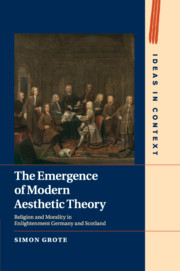 The Emergence of Modern Aesthetic Theory
The Emergence of Modern Aesthetic Theory Book contents
- The Emergence of Modern Aesthetic Theory
- Ideas in Context
- The Emergence of Modern Aesthetic Theory
- Copyright page
- Dedication
- Contents
- Acknowledgments
- Abbreviations
- Transcription and Citation
- Introduction
- Chapter 1 Christian Wolff's Critics and the Foundation of Morality
- Chapter 2 Pietist Aisthēsis, Moral Education, and the Beginnings of Aesthetic Theory
- Chapter 3 Alexander Baumgarten's Intervention
- Chapter 4 Francis Hutcheson at the Margins of the Scottish Enlightenment
- Chapter 5 William Cleghorn and the Aesthetic Foundation of Justice
- Conclusion
- Bibliography
- Index
- Ideas in Context
- References
Bibliography
Published online by Cambridge University Press: 11 October 2017
- The Emergence of Modern Aesthetic Theory
- Ideas in Context
- The Emergence of Modern Aesthetic Theory
- Copyright page
- Dedication
- Contents
- Acknowledgments
- Abbreviations
- Transcription and Citation
- Introduction
- Chapter 1 Christian Wolff's Critics and the Foundation of Morality
- Chapter 2 Pietist Aisthēsis, Moral Education, and the Beginnings of Aesthetic Theory
- Chapter 3 Alexander Baumgarten's Intervention
- Chapter 4 Francis Hutcheson at the Margins of the Scottish Enlightenment
- Chapter 5 William Cleghorn and the Aesthetic Foundation of Justice
- Conclusion
- Bibliography
- Index
- Ideas in Context
- References
- Type
- Chapter
- Information
- The Emergence of Modern Aesthetic TheoryReligion and Morality in Enlightenment Germany and Scotland, pp. 236 - 248Publisher: Cambridge University PressPrint publication year: 2017


